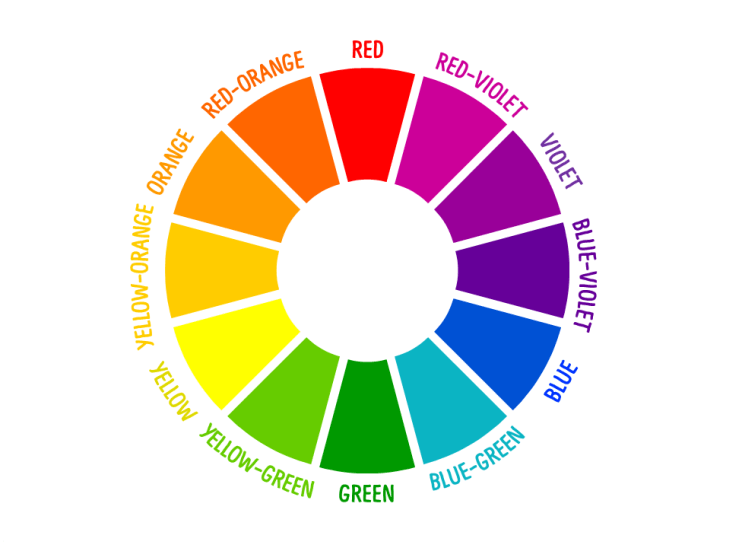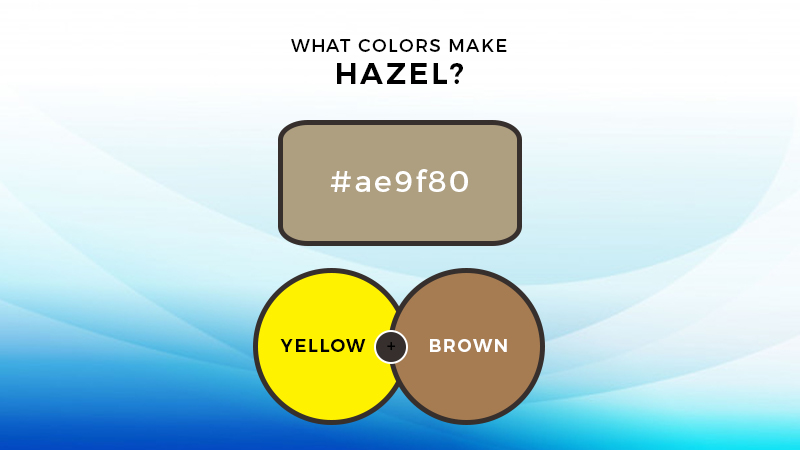What Colors Make Hazel? What Two Colors Make Hazel
When you hear the word “hazel,” what immediately comes to mind? Perhaps you think about hazelnuts and the sweet taste of hazelnut chocolate.
You might also think about hazel eyes, which only 5% of the world’s population has. Whatever comes to mind when you hear “hazel,” you might be looking to learn how to produce this hue by mixing two colors.
Here, we will discuss the colors that make hazel. But before that, there are some things you need to learn about color mixing.
To start off, it is important to understand the color wheel. Keep on reading…
The Color Wheel
Think back to the first time you learned about arts and crafts. You probably started with a bunch of crayons or colored pencils. As you grew older, you learned about color mixing from your art teacher through the color wheel.
For most of us, the color wheel was our very first introduction to color theory. Basically, this wheel gives us a logical illustration of how the mixing of different hues will appear in the form of a circle. Interestingly, it was first developed by Sir Isaac Newton in 1665.
The traditional wheel we know today is composed of primary (red, blue, yellow), secondary (orange, green purple), and tertiary hues (a mix of primary and secondary colors).
Specifically, tertiary colors are composed of two-word colors; namely yellow-orange, red-orange, red-purple, blue-purple, blue-green and yellow-green.
Now, when you look at a color wheel, you will see that hazel sits between the primary colors yellow and blue, or between the secondary colors green and orange.
This discussion of the color hazel’s position in the wheel definitely gives you a confusing idea of what colors to mix. The simple explanation is that hazel is an ambiguous color.
Take, for example, hazel-colored eyes. Many people with hazel eyes say that the way people perceive their eyes changes depending on what color they are wearing. This is because the hue of their clothes highlights a feature of ambiguous color.
There is much to learn about mixing hazel, but first, let’s go to the light spectrum.
The Light Spectrum
When talking about hazel eyes, it is important to talk about the light spectrum. Keep in mind that all eyes are actually colored brown, even if we perceive them as blue, green, or hazel.
This is due to a combination of melanin, light, and the Rayleigh scattering effect.
To put it simply, people with brown eyes have a lot of melanin in their irises, while those with blue eyes have less.
Those with green or hazel eyes have an average amount of melanin. Take note that melanin absorbs light, which gives those with a lot of it in their irises darker-colored eyes.
Now, when light hits the irises of blue-eyed individuals, the light is reflected out and not absorbed because they lack melanin. This is called the Rayleigh scattering effect.
For hazel-eyed people, the Rayleigh effect occurs because they have a moderate amount of melanin on their irises.
However, color perception can shift depending on the amount of light that hits their irises. Under various amounts of light, hazel eyes can look brownish-green, greenish-brown, and even golden.
What Two Colors Make Hazel?
Knowing this, you know that hazel, especially when it comes to eye color, is composed of colors that make up greenish and brownish colors.
When producing this hue by mixing two others, you only need yellow and brown. This will give you a deep green hue, so make sure to create lighter tints using white until you achieve the desired hue.
Moreover, you can add more yellow to create a golden version of this hue. However, as this is an ambiguous color, you can also create hazel by mixing yellow and blue.
Once again, make sure to make it lighter by adding white to get the tint of hazel you prefer. You can also use orange and green, combined with grey, to create a hazel tone.
Painting with Hazel
Now that you know how to produce hazel using the right types of colors, you can apply this knowledge to your art. This is useful especially if you want to paint people with hazel eyes.
Moreover, you can make use of the different methods of producing this hue when experimenting with colors that complement hazel eyes.
When painting people with this eye color, you want to make sure that you make the right hue pop out when paired with other-colored clothes. For example, you might want to make a greenish version when painting a person wearing a green tone.
You can also use this knowledge when painting other hazel-colored objects to represent adventurousness, independence, and sophistication. This hue is also associated with development, restoration, and rejuvenation.
Conclusion
Hazel may be an ambiguous hue, but now that you know how to create it using different colors, you can make this unique color your own. That’s all for this lesson. We hope you learned a thing or two!
Read Latest Posts

Hi, I'm Anthony Tran! Welcome to my site. I live in Arizona and am obsessed with all things related to building an Online Business and working from home. Learn about my journey here.
Follow Online






